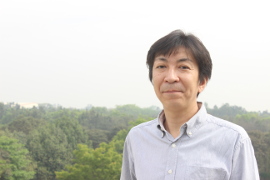Dr. Kouichi Hasegawa (iCeMS)
Understanding and controlling self-renewal and differentiation in human pluripotent stem cells
Human pluripotent stem cells (hPSCs), including embryonic stem cells (hESCs) and induced pluripotent stem cells (iPSCs), retain the ability to differentiate into almost all cell types in the human embryo and adult body, and to indefinite growth while maintaining a normal karyotype. This hPSC characteristic effectuates great potential for application in regenerative medicine, drug development, and in the study of disease mechanisms. However, lack of knowledge about the molecular mechanisms of hPSC self-renewal and differentiation is impairing affordable stem cell production, which is required for hPSC applications, especially in transplantation therapy and drug screening. In an international and institutional collaboration with the Institute for Integrating Cell-Material Sciences (iCeMS), Kyoto University, we are focusing on understanding the molecular repertoire of hPSC self-renewal and controlling the same, using various materials including chemical compounds, polymers, nano-fibers and micro-patterning. The long-term goal of our lab is to develop disease models for high throughput molecular studies and drug screening by utilizing genome-editing tools on hESCs, and patient-derived iPSCs.



